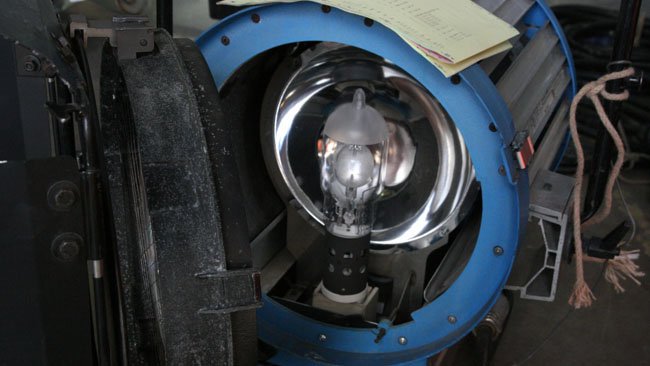
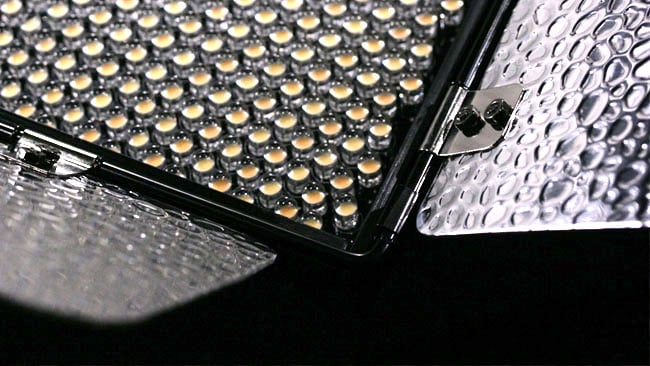 Aputure's panels work well, but they're not intended to replace big HMIs
Aputure's panels work well, but they're not intended to replace big HMIs
Watt’s up: Why you can still only get a certain amount of brightness from a battery you can carry on your back whatever you’re using.
Recently, a friend turned down the offer of borrowing a 575-watt HMI PAR on the basis that “it can't be battery-powered.” Well, okay, in actual fact it can, but it's true that a 575-watt light isn't easy to run from battery power that you can tote around in a backpack. Naturally, this would be just as true of a 575-watt LED, but for reasons quite possibly related to commercial expediency this isn't widely recognised.
Stated straightforwardly, of course, it's clear that 575 watts of one sort of load is – in the broad strokes – similar to 575 watts of another sort of load and requires just as big a pile of batteries to power it. The other thing to be aware of is that LEDs don't actually produce much, if any, more light per watt than things like HMI and fluorescent, so a 575-watt LED, if such a thing existed, wouldn't be any brighter than a 575-watt HMI, or a 575-watt collection of fluorescent tubes. In 2016, we don't have the technology to create light on the order of a 575W HMI with battery power. It does not exist.
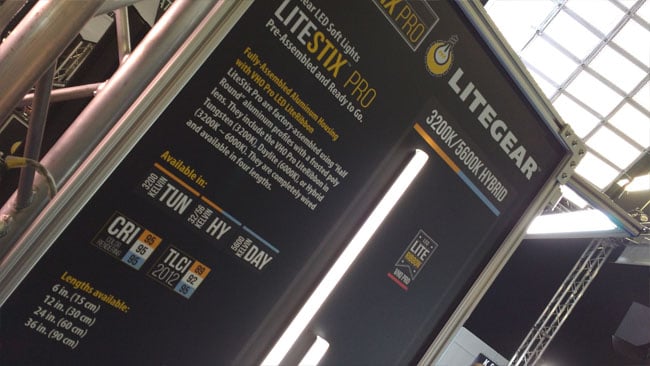
LiteGear's Litestix have much in common with fluorescent, but are lighter and sturdier
Obviously, there are a whole bunch of very good reasons to use LEDs. They're often small and light, physically tough, available in tungsten and daylight, and dimmable without shifts in colour, which is a characteristic that's almost unique to the technology (give or take ND gel or shutters). Perhaps the most significant LED benefit is that they're available in a huge range of form factors, with various output characteristics. There are LEDs that come in giant flexible sheets as well as LEDs that directly emulate the fresnels of old. LED technology is good and useful and it should be applied where it's appropriate.
The point, though, is that LED is small, light, and tough on its own terms. It's not smaller, lighter or tougher than, say, a 2.5kW HMI, because there are few LEDs that have comparable output to a 2.5kW HMI. The comparison simply isn't relevant. It makes slightly more sense as regards fluorescent tubes, which can have similar power density per unit area to an LED panel, but the best way to approach LED is still on its strengths, not in how well it competes with things that it just can't compete with.
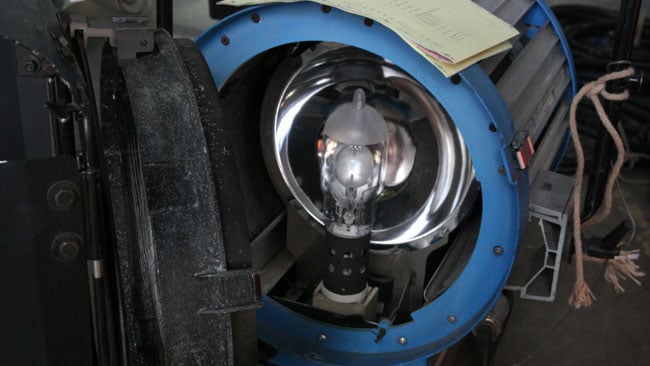
Few if any LED products can match the output of this 6K HMI
Manufacturers often claim that LED has a ten-to-one efficiency advantage. It's really more like four to one, over tungsten, which is broadly the same as HMI and fluorescent. This is especially true of LEDs with good colour rendition. It's possible to make LEDs that are significantly more efficient than the most efficient alternatives, but the necessary engineering compromises mean the light is unhealthily cyan-tinted and far from suitable for filmmaking (though it can have a certain interest factor if used in a deliberately coarse, mixed-colour-temperature scenario). The degree of scrutiny afforded to LED colour may be a bit unfair these days, since the best is now quite good, but for very high output scenarios – for backlighting that huge night exterior with a convincing moon – the incumbent technologies remain effective.
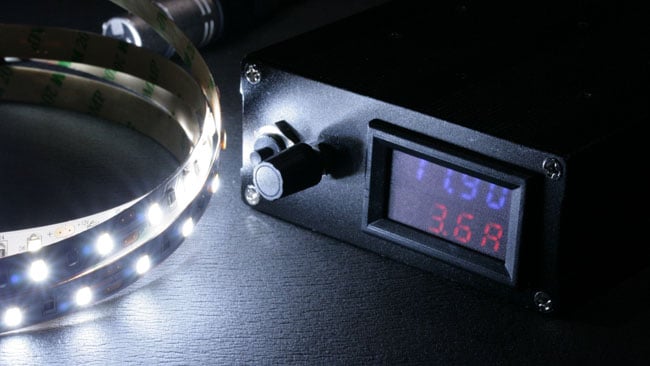
LED strip is cheap and often useful as a production design and set dressing element, and is a genuinely useful new development
The reason that egregious claims about LED efficiency gain traction is because of the confusion between brightness and intensity. The emissive part of an LED device is physically small and easy to focus. LED flashlights, usually at about three watts, can be dazzlingly intense, but naturally, if they're fired through some diffusion to create broader coverage, there's practically nothing there. All of the energy is fired into a very narrow beam angle, so the beam looks impressively powerful. Try to do anything with it, though, in terms of achieving a given stop over a given area, and there's not actually all that much energy there. Many LED devices are in the sub-hundred-watt range, something that certainly goes for most of the foot-square panels we see, as well as the vast majority of affordable fresnel- or par-style lights.
A one hundred watt LED is a useful device, certainly exceeding the sheer output of the smallest tungsten units – 300W fresnels, for instance. But it's not going to provide a key light for a scene more than a few feet wide, even with modern, highly-sensitive cameras, and especially if it's put through diffusion. They are quite good for backlight, where colour problems can often be overlooked in favour of a simple warm or cool cast to represent sun or moon respectively, but directors of photography still need to look for more powerful lights for their primary lighting instruments.
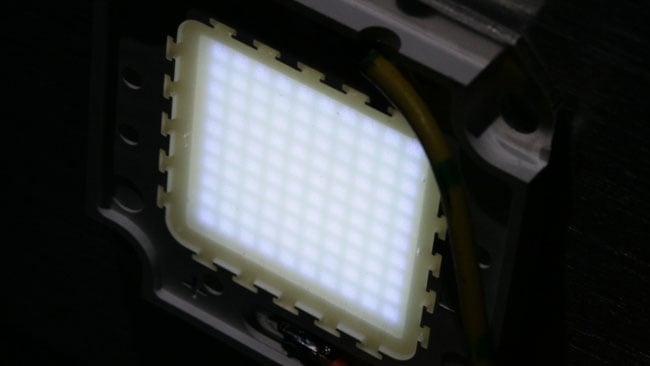
The largest single-device LED arrays are currently at a few hundred watts, like this 100W Yuji module. Notice the 10x10 grid of one-watt junctions
Modern productions are often very budget-constrained, very mobile, and need to work very quickly. The desire to be off the mains, even just because it makes lighting faster to place, is entirely understandable, and is becoming the new normal. In the best cases, productions with little time but lots of expectation can do a better job simply because a battery-powered LED can be walked in quickly and set in seconds. It's quite common to be asked to steal shots on street corners even on otherwise well-organised shows, insurance implications be damned, and productions are often improved by the ability to do this. Sit-down interviews can now quite often be lit entirely with cordless lighting.
Anything bigger than that, however, will generally require a little more juice than can reasonably be carried around in a box.
Tags: Production


Comments